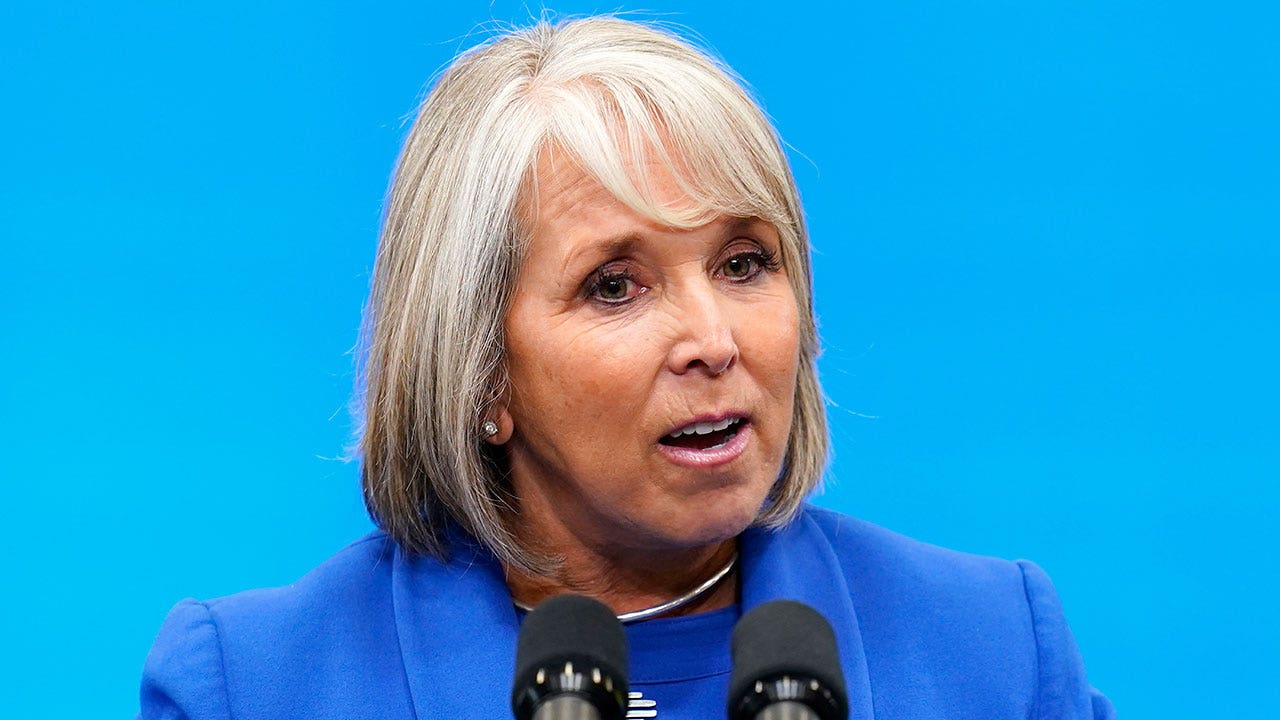Shooting at New Mexico conquistador statue protest
A suspect was arrested after allegedly shooting and wounding a man at a protest in Española, New Mexico, where officials had planned to install a statue of Spanish conquistador Juan de Oñate, authorities said.
- Democratic Gov. Michelle Lujan Grisham has proposed a nearly 10% increase in the general fund spending for the fiscal year from July 2024 to June 2025, totaling $10.5 billion.
- The budget plan aims to address housing opportunities, childhood literacy and healthcare access.
- The state anticipates a surplus due to significant oil and natural gas production in the Permian Basin.
New Mexico’s governor is proposing a nearly 10% general fund spending increase for the coming fiscal year to shore up housing opportunities, childhood literacy and health care access, with additional payouts for electric vehicles purchases.
Democratic Gov. Michelle Lujan Grisham on Thursday published the $10.5 billion budget plan for the fiscal year running from July 2024 through June 2025. It would increase general fund spending by roughly $950 million over current annual obligations.
The Democratic-led Legislature develops its own competing spending plan in advance of a 30-day legislative session that begins Jan. 16. Lujan Grisham can veto any and all budget provisions approved by legislators.
NEW MEXICO GOV. GRISHAM PROPOSES PLAN TO TURN OILFIELD WASTE INTO CLEAN WATER SUPPLY
The nation’s No. 2 oil-producing state anticipates a multibillion-dollar surplus for the coming fiscal year, driven largely by oil and natural gas production in the Permian Basin that underlies southeastern New Mexico and western Texas.
New Mexico Democratic Gov. Michelle Lujan Grisham speaks at Arcosa Wind Towers, on Aug. 9, 2023, in Belen, N.M. Grisham has proposed a nearly 10% general fund spending increase for the coming fiscal year for housing opportunities, childhood literacy and health care access. (AP Photo/Ross D. Franklin, File)
The governor has signaled affordable housing as a major priority, proposing one-time spending of $500 million to expand opportunities through down-payment assistance, and to finance affordable housing and related infrastructure. The state separately would use $40 million to launch a statewide homelessness initiative.
In November, voters signaled frustration with surging home prices in fast-growing Santa Fe by approving a tax on mansions to pay for affordable-housing initiatives.
Spending on public education would increase by $283 million, or 6.8%, to nearly $4.5 billion — the single largest chunk of annual general fund appropriations.
One goal is to bolster specialized literacy programs, while founding a state literacy institute. Additional funds would help extend annual instructional time at public schools across the state. Republicans in the legislative minority oppose the push to expand public school calendars.
The Lujan Grisham administration hopes to add 2,000 slots for infant and toddler childcare and expand early preschool by 1,380 slots through increased state spending, while also bolstering aid to children being raised by grandparents.
Legislators have expressed frustration in recent months with the results of sustained spending increases on public education. Statewide, the share of students who can read at their grade level is 38%. Math proficiency is at 24%. The state’s high school graduation rate hovers at 76% — well below the national average of 87%.
Lujan Grisham pledged in a statement to “continue to spend within our means, responsibly and with an eye toward accountability.”
Her budget proposal includes a 3% increase in pay for workers at executive agencies and public schools statewide — and larger increases of 8% for corrections officers and 14% for state police.
Economists for state agencies say New Mexico’s income surge is slowing down, but far from over, as lawmakers wrestle with how much to spend now or set aside for the future in case the world’s thirst for oil falters.
The governor’s budget outline leaves as much as $500 million in leeway for legislators to approve tax cuts and tax incentives that spur the adoption of electric vehicles and other low-pollution cars and trucks.
New Mexico regulators recently adopted an accelerated timetable for automakers to nearly phase out deliveries of gas- and diesel-burning cars and trucks — amid concerns about the affordability of electric vehicles in a state with high rates of poverty.
In many other states, an era of soaring budget surpluses and cuts to broad-based taxes may be coming to a close this year as a pandemic-era revenue surge fueled by federal spending and inflation recedes.





